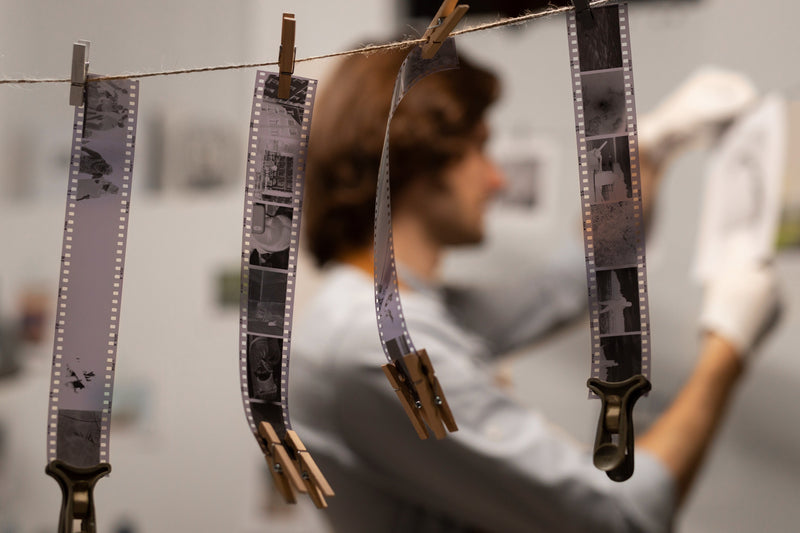Why the material of film remains vital—even in an era of high-resolution pixels.
A meaningful comeback for celluloid
Despite the relentless advance of digital cinematography, recent indicators suggest that the analogue medium of film is far from obsolete. According to IndieWire, 2025 will feature at least 21 major motion-pictures shot on film, including formats like 35 mm and VistaVision. IndieWire At the 2025 Cannes Film Festival, 24 productions shot on film (ranging from 16 mm to 35 mm) were selected for competition, Un Certain Regard and other strands. Cinematography World
For a film-processing and scanning house such as CPC London—serving the analogue and digital filmmaking community—this resurgence is more than just a trend: it underscores the continuing relevance of film processing, high-resolution scanning, archiving and restoration workflows that bridge old and new.
Directors, formats and the human imprint
One case in point: “Bugonia”, directed by Yorgos Lanthimos, utilised 8-perf 35 mm VistaVision for much of its shoot—American cinematographer Robbie Ryan estimated 95 % of the film was captured in this format. Wikipedia This choice is not nostalgia for nostalgia’s sake. The larger negative area, finer grain and specific plate aesthetic deliver a visual texture that digital sensors don’t fully replicate.
In parallel, the broader industry is awakening to the truth that “film vs digital” is not simply a technological dialectic—it is a creative one. As one recent column noted: “For example, three out of five of the 2025 Academy Award-nominated movies for Best Cinematography were shot on 35mm film.” Indiana Daily Student When craft meets format, the medium becomes part of the message.
The archival imperative and scanning chain
Even as production capture remains in focus, preservation and restoration are pulling us deeper into film’s material future. The New Yorker recently documented the painstaking work at the Fondazione Cineteca di Bologna that restores brittle originals back into 4 K scans and new preservation masters. The New Yorker As one archivist put it: “If we’re not preparing films to last as far into the future as possible, then what are we doing?” Brooklyn Rail
Here is where CPC London’s expertise in scanning, archiving and restoration becomes a critical link: processing the original negative, scanning at high resolution, generating digital masters, and creating archival internegatives. The aesthetic of celluloid remains only if the chain is respected and treated as an integrity-driven workflow—not an afterthought.
Analogue vs AI: making the human hand visible
In still-photography and cinema alike, the debate over analogue vs AI continues to sharpen. The question is not simply “Does digital beat film?” but rather “What is lost when the human decision-making and chemical nuance are removed from the equation?”
In an age when generative tools can reconstruct imagery, the human craft—the lens choice, the film stock decision, the scanner’s gate, the colour-grade decisions—takes on renewed value. For films shot on stock like ORWO or Ferrania, the realisation is that film is more than capture: it’s texture, density, depth, latency. Digital might match resolution but rarely matches feel.
The workflow that keeps film alive requires human precision: proper processing of negatives, high-quality scanning without oversmoothing grain, and archival backup with metadata and physical storage. It’s the kind of “lab-to-archive” finesse that CPC London excels at and that underpins film’s continued survival.
Why this still matters—for filmmakers and the industry
-
Choice of medium drives the workflow: Opting for 35mm or VistaVision means you’re immediately engaging with processing houses, scanning pipelines and archival deliverables.
-
Film remains a differentiator: With major festival selections and award-recognised works shot on celluloid, there is aesthetic and brand capital in choosing film.
-
The full lifecycle matters: It isn’t just about filming on stock—it’s about processing, scanning, restoration, archiving. CPC London’s end-to-end capabilities keep the chain intact.
-
Human craft matters: Whether it’s selecting the right stock, determining grain preservation or making scanning decisions, human judgement remains at the core of film’s value.
Final thoughts
In 2025, the return of film is not a retreat but an evolution. The tactile, material nature of celluloid is making sense again—to filmmakers, studios, festivals and audiences alike. And behind that resurgence is a vital infrastructure: processing labs, scanning houses, film stocks, and archivists.
If you are a cinematographer, producer or archival manager planning a shoot on 35 mm or VistaVision film, or if you seek high-resolution scanning, digital restoration or long-term archival print services, speak to CPC London. We support film processing, scanning, printing and restoration with global reach and analogue-aware expertise.
#ShotOnFilm #FilmRestoration #AnalogueCinema #Cinematography #FilmProcessing


